Eager to follow the new trend of cloud-based app maintenance?
Well, then you must know the brief about the same.
Here, you will get it all. In this blog, we will start with the concept, and trends then will shift to benefits and challenges, and later to the best practices of using cloud app maintenance.
Let’s begin the journey.
What is Cloud-Based App Maintenance?
Learning about cloud-based app solutions is important in the current era where the software has to record massive amounts of data. Here’s the discussion of the concept for those who are unaware of the same.
Cloud-based app maintenance is an important and continuous process to monitor, update, and manage apps that are hosted in the cloud environments.
It comprises of many activities such as bug fixing, performance optimization, security updates, and feature updates.
Now, shall we switch to the current trends in cloud-based app maintenance?
Trends in Cloud-Based App Maintenance
App maintenance services can be useful to you only when you are aware of the current trends, right?
With the emerging concept of cloud-based app maintenance, let’s consider its current trends.
Here’s a list of Cloud App Maintenance trends to consider:
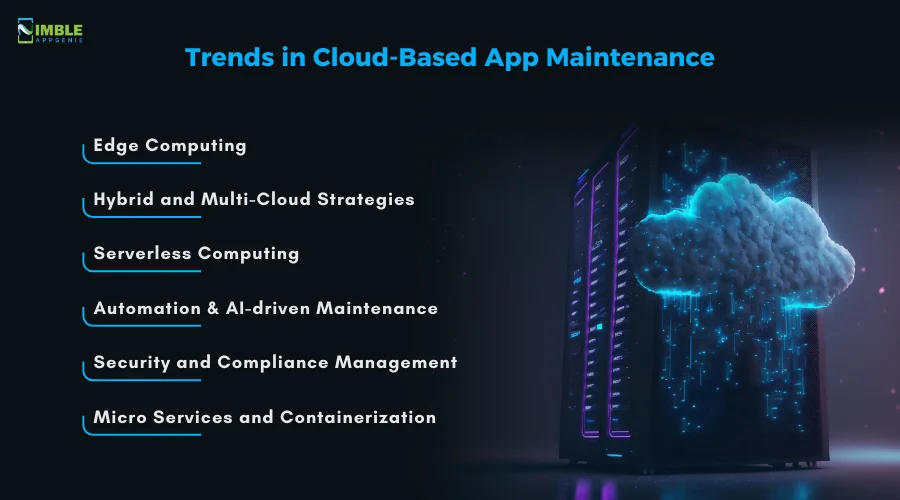
♦ Edge Computing
Edge computing is all about a diversified and distributed computing model which often brings computation as well as data storage closure to the sources.
In simple terms, it permits devices within remote locations to process data at the edge of the network. One of the examples where this technology is used is self-driving cars, autonomous robots, and other smart equipment.
♦ Hybrid and Multi-Cloud Strategies
The rise of hybrid and multi-cloud strategies has created a new trend within the current era of app maintenance.
This technology comprises the use of different cloud providers such as AWS, Google Cloud, Azure, and OCI. It helps to view the actual process that is occurring across the entire online landscape.
♦ Serverless Computing
Serverless computing is a new concept within cloud app maintenance, it is in demand and can help businesses to maintain their apps by improving their scalability.
Here the developers can maintain the apps without any need to manage servers and can pay for the exact amount of resources required to do the tasks. Examples of serverless computing can be defined as chatbots and task schedulers.
♦ Automation and AI-driven Maintenance
Automation and AI-driven maintenance are essential for real-time cloud monitoring. These tools are effective for streamlining app monitoring and issue detection along with self-healing processes.
The use of this advanced technology helps to reduce manual intervention along with application downtime. It can further help automate the procedure of analyzing as well as prioritizing the bug reports. This provides developers time to fix critical issues during app maintenance.
♦ Security and Compliance Management
According to the current trend, it is essential to protect the data with more stringent regulations such as GDPR and CCPA. Along with this, we maintain compliance as a priority.
Under this trend, cloud providers offer tools for regular maintenance and updates. It assists with security management and ensures that the apps meet the necessary standards. Maintaining security is an important parameter, thus with the latest app maintenance tools, it can be addressed.
♦ Micro Services and Containerization
In the current era of app maintenance, the use of micro services and containerization-based structures such as Docker and Kubernetes are assisting in maintaining as well as scaling up diversified parts for the application.
This approach of cloud-based app maintenance independently assists in improving agility as well as reducing maintenance complexity. It has established a network among users and the app through its simple networking framework.
These are some of the crucial trends that you must consider. Well, these trends display the future of cloud-based app maintenance.
Now, it’s time to look for the benefits of cloud-based app maintenance. Let’s proceed with the next section.
Benefits of Cloud-Based App Maintenance
Before you look to adopt cloud-based app maintenance, it’s important to learn about its benefits.
Here is a list to follow:
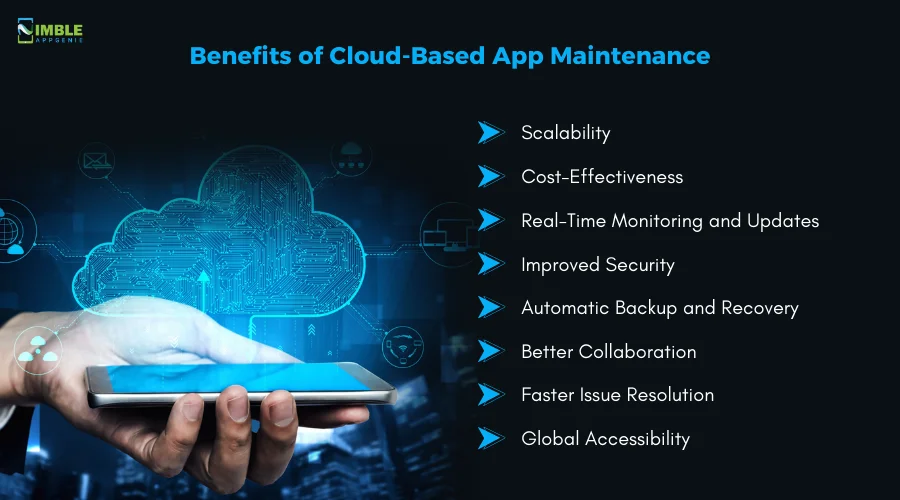
1. Scalability
The use of cloud-based app maintenance is effective in enabling scalability with its architecture as well as virtualization technologies.
Under the app maintenance technique, cloud providers can easily add or remove features or computing resources on your demand after leveraging virtual servers.
Scalability in cloud maintenance can be helpful in dynamically adjusting the resources that can accommodate and handle changing traffic needs and workloads.
2. Cost-Effectiveness
Implementing a cloud-based app maintenance service can eliminate the expense of physical hardware, and maintenance as well as reduce any additional cost to hire dedicated IT staff.
Cost-effective cloud-based app maintenance assists the apps to scale and helps the businesses to pay only for what they actually need.
This technology reduces the cost by optimizing the software licenses as well as hardware or any storage purchases both over-premise as well as within the data center of the app.
3. Real-Time Monitoring and Updates
Cloud-based app maintenance is an important form of monitoring that promotes analyzing and tracking the storage of resources, processes, performances, users, and databases.
With the help of real-time monitoring in the cloud, you can track multiple analytics simultaneously. These cloud platforms can be used by developers to monitor app performance and usage in real-time.
This is effective in detecting issues such as downtime, slow performance, or errors. These can be updated automatically without downtime and can allow seamless improvements.
4. Improved Security
The use of cloud-based app maintenance can increase app security by availing automatic updates that can patch vulnerabilities or prevent potential threats.
Additionally, it will offer robust encryption protocols while security the users’ data both in transit and at rest. It further assists in protecting any sensitive information.
Improving mobile app security is one of the benefits of cloud-based app maintenance to be considered. Cloud app security offers the adoption and implementation of advanced security tools helpful to scan for anomalies, malware, and for any suspicious activities.
5. Automatic Backup and Recovery
The global accessibility of cloud apps promotes the use of online backups, where the developers make use of software that runs over the users’ devices and is helpful to scan folders as well as save them to the cloud.
Using this automated backup system eliminates any manual steps that are required to ensure that backups are performed correctly and regularly.
With this system, you can provide access to the users for selecting files that they want to store in the cloud. However, with the implication of cloud backup services, you can opt for software that can automatically save as well as sync the stored files over the app.
6. Better Collaboration
With the implementation of cloud-based maintenance technologies, you can promote better collaboration. The use of cloud collaboration enables asynchronous editing and communication over the app.
It promotes next-generation application maintenance where multiple individuals can access and review as well as edit a document in real time.
Developers can update the app with cloud-based maintenance which is beneficial to businesses who like to operate the app with multiple locations or remote employees.
7. Faster Issue Resolution
The use of cloud-based applications comprises employing automated tools that can streamline routine app maintenance and efficiency in resource management as well as for faster issue resolution.
It is one of the practices for using remote servers as well as networks for storing, managing, and processing data. These solutions can help solve the common problems comprising slow performance, security breaches, and software compatibility.
This cloud-based app maintenance software offers flexibility and reliability, increased performance as well as efficiency that assists in lowering overall costs.
8. Global Accessibility
Through cloud compliance and regulations, developers know well the areas where the app launch can be suitable and as per the norms.
It will empower people with visual, learning, age-related, mobility, hearing as well as speech disabilities to learn more effectively and to engage with users around the globe.
This will enhance innovation and will allow organizations to achieve their target users by incorporating AI as well as machine learning for use cases within their strategies.
These were some of the benefits to be considered while adopting cloud-based app maintenance.
Now, let’s consider some of the challenges of cloud-based app maintenance in the next section.
Challenges of Cloud-Based App Maintenance
If you consider the benefits of implementing cloud-based app maintenance, then it’s important to learn about the challenges that might affect its adoption.
Here’s a list to follow:
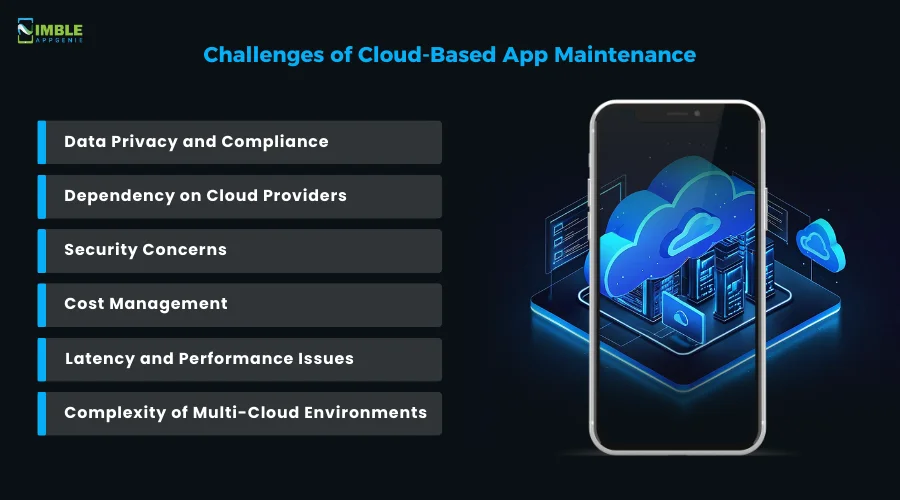
1] Data Privacy and Compliance
If it’s something you put on the cloud, then its security can be at risk. There are multiple times when your app often handles sensitive user data by making data privacy a critical concern. This can even lead to data breaches and increases cyber-attacks.
Thus, organizations should comply with different regulations such as GDPR, HIPAA and others. It should depend on the location and the industry.
2] Dependency on Cloud Providers
Here, you should remember one of the important points as an organization which is dependency on the cloud providers. There are many organizations that have become completely dependent over these services and infrastructures which are offered by that provider.
It might increase a major risk which is quite popularly referred as “vender lock-in”. Thus, when the provider might increase the price of the service, you will be bound to pay for that cost.
3] Security Concerns
It’s true that the cloud platforms provide security of data. However, there remains a window of data breaches and cyber-attacks. As an organization, if you avoids to take care of your data, the cloud providers or maintaining your app becomes of no use at all.
This can increase the risk of data loss or increase operational app downtime. It will further result in enhancing app issues and bugs which will create difficulty for the users to access the app effectively.
4] Cost Management
Although the cloud services that you opt for in your app can cost you a lot or are billed as per the requirement during maintenance, it can still lead to cost overruns, if not managed timely. This will further impact your overall maintenance and your budget to update the app.
Here are different factors that should be looked upon such as mismanaging idle services, and underestimating resource usage.
5] Latency and Performance Issues
Another challenge that you might face is latency and performance issues with cloud-based app maintenance. Please note that cloud-based apps depend on different data centers as it can further result in major latency issues for users.
Along with this, your app might face the issue of inconsistent performance in cloud environments which might occur due to network variations.
6] Complexity of Multi-Cloud Environments
Do you want to have multiple-cloud environments to maintain your app? It’s normal to have a multi-cloud environment. Well, it’s an amazing idea to secure the data and boost the performance of app.
However, it brings complexity because each cloud provider has a unique APIs services which can create difficulties in standardizing operations.
These were some of the challenges and issues that you might face while selecting and implementing cloud-based app maintenance.
Till now, we discussed the concept of cloud-app maintenance, its current trends, benefits and challenges.
Well, if you want to have a complete guide, let’s cover the cloud maintenance best practices in the following section.
Cloud-Based Maintenance Tools and Technologies
You cannot implement any type of app maintenance framework without effective tools and technologies.
Here is the list of the top app maintenance tools & techniques for cloud to rely on.
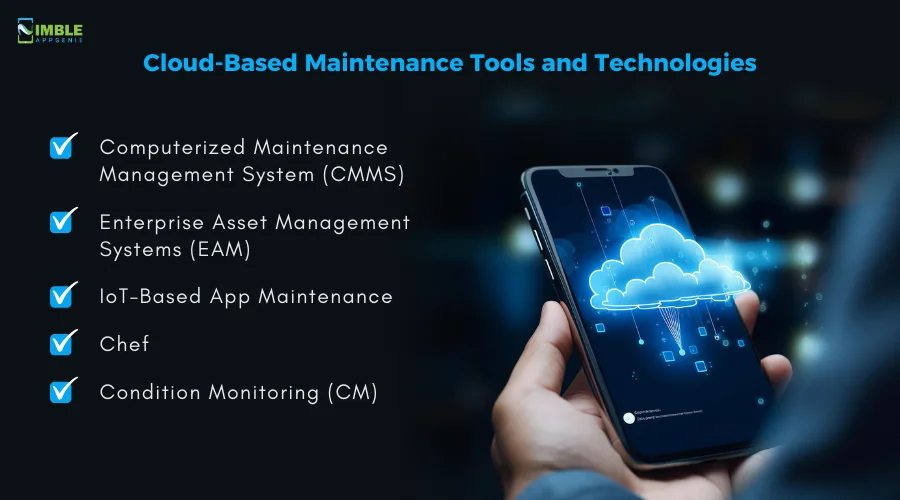
-
Computerized Maintenance Management System (CMMS)
It is an important software tool which is effectively used by the maintenance planners, and schedulers for preventive maintenance tracks work orders and to monitors the equipment performances.
This is an important tool used in cloud app maintenance for fixing errors and building connections.
-
Enterprise Asset Management Systems (EAM)
Enterprise asset management systems implement management as well as maintenance of physical assets which are owned by the business.
This will assist to manage the lifecycles of your app maintenance, is helpful to track asset performance and is useful for optimizing overall performance.
-
IoT-Based App Maintenance
This is an important and trendy technique within app maintenance, where the sensors gather real-time data from the users through equipment and then transfer it to the cloud.
Later, the cloud server analysis users data and with machine learning models, the app provides recommendations to users based on their preferences.
-
Chef
You can make use of chef tool within cloud-based app maintenance which is an open-source Ruby-based configuration which enables you to automate the application infrastructure.
There are many features that can be useful for app maintenance of chefs such as backup and recovery, real-time data synchronization, scalable automation, and more.
-
Condition Monitoring (CM)
Condition monitoring is among the cloud-based maintenance tools that provide real-time data based on the performance of a system that can further be helpful for optimizing overall performance.
Under this technique, you can visualize complicated equipment and collaborate with diversified cloud-based platforms.
Well, these were some of the tools that can be helpful in implementing the cloud-based app maintenance effectively.
Other than this, you can make use of remote diagnostics, artificial reality, predictive analytics, AtomSphere, Puppet, CloudHub, and many others to improve app performance via maintenance.
Are you still confused about implementing cloud-based app maintenance?
Well, then let’s consider some of the popular examples in the next section.
Successful Examples of Cloud-Based App Maintenance
To decide over a type of maintenance practice can be difficult even if you are aware of its benefits and challenges.
Well, here are the top 5 examples to consider that will bolster your choice over selecting cloud-based app maintenance.
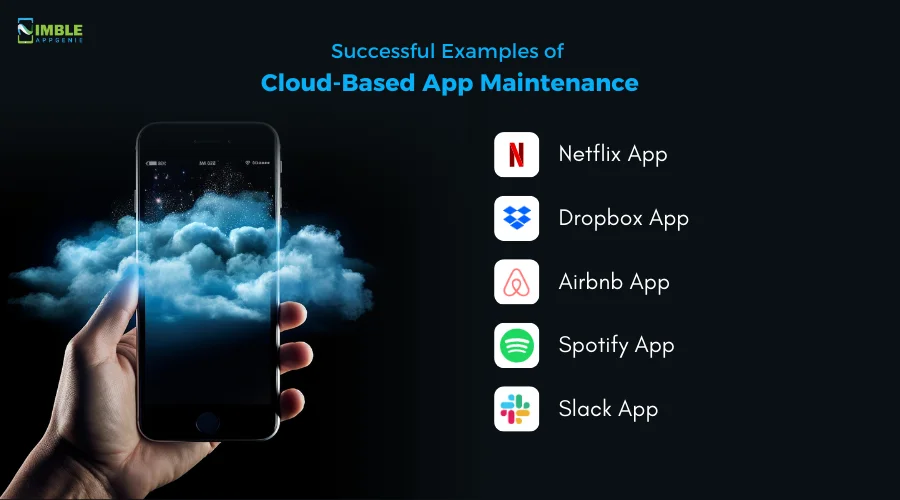
► Netflix
Netflix is one of the most famous video streaming platforms that requires regular updates. The platform agrees to the fact that it relies over cloud-based platforms for their scalable computing and storage requirements.
It heavily rely over the Amazon Web Services (AWS), which is one of the largest cloud platforms. App maintenance across this cloud seems feasible and effective to address the issues and errors.
Under AWS, Netflix makes use of a number of servers that utilize over 100,000 server instances. The platform goes under app maintenance procedure where the developers effectively work over cloud to enhance its performance.
► Dropbox
Dropbox is one of the large file hosting service that offers services over cloud storage. The work cannot be done without implementing cloud facility. Thus, it cannot work until it focuses on its app maintenance criteria.
Dropbox is a platform that offers different cloud storage options for its users whether they are an individual, business or is a large enterprise.
They maintain the platform using advanced cloud tools that help them reduce any bugs and errors. This process assist them to enhance the complete performance of the app.
► Airbnb
Airbnb leverages cloud computing for effectively managing the users data successfully. The company uses cloud-based app maintenance to improve features and provide an enhanced experience to users.
Additionally, through leveraging AWS’s global network of data centers, Airbnb was able to minimize latency as well as enhance performance to provide a better user experience worldwide.
Over the platform, users can store their data and are willing to manage the features. Users were able to ramp up with the cloud servers without connecting with anyone without any minimum usage commitments.
► Spotify
Spotify makes use of cloud computing by employing automated, developer-friendly services across the Google cloud. The platform knows well the importance of cloud and its maintenance needs, thus, it uses effective tools for analyzing the users’ data.
They make use of Google Cloud Platform (GCP) and maintain the app accordingly which minimizes downtime. This assists the users to have a list of their favorite songs as soon they want them in their playlist.
The platform makes use of the latest maintenance tools that enable them to successfully create a structure to gather users’ data and enhance app’s performance.
► Slack
Slack makes use of Amazon’s virtual private cloud for managing the security groups as well as firewall rules. It has even enable to control user roles, credentials and access permissions. This service enables Slack to provide users will incredible experience.
This is one of the best examples of successful cloud maintenance, where the user aligns with the platform and makes the use of cloud-based tools to reduce errors in features and its overall performance.
One large part that users can observe over the platform is it replaces disparate communications tools with a unified area. Additionally, developers at Slack make the use of terraform that helps them to manage the infrastructure.
Are you still confused about using Cloud-app maintenance platform?
Well, connecting with an experienced company might help.
Conclusion
Cloud-based app maintenance is a crucial aspect of modern software development, offering numerous benefits such as scalability, cost-effectiveness, and improved security. However, it also presents challenges like data privacy concerns, dependence on cloud providers, and potential security risks.
By carefully considering these factors and adopting best practices, organizations can effectively leverage cloud-based app maintenance to enhance their operations and achieve their goals.
FAQs

Niketan Sharma is the CTO of Nimble AppGenie, a prominent website and mobile app development company in the USA that is delivering excellence with a commitment to boosting business growth & maximizing customer satisfaction. He is a highly motivated individual who helps SMEs and startups grow in this dynamic market with the latest technology and innovation.
Table of Contents




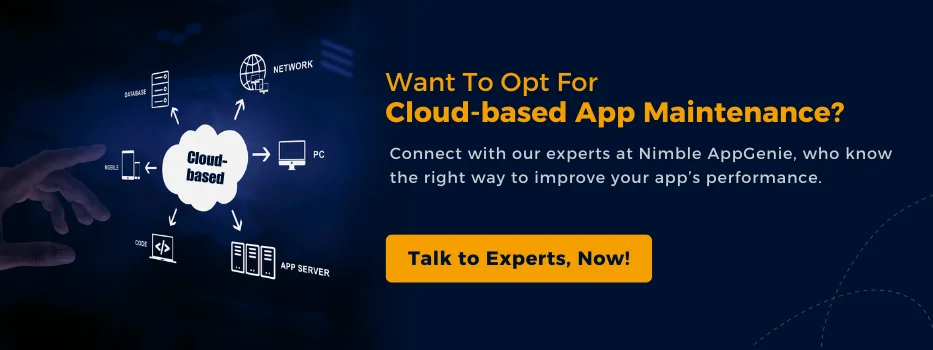
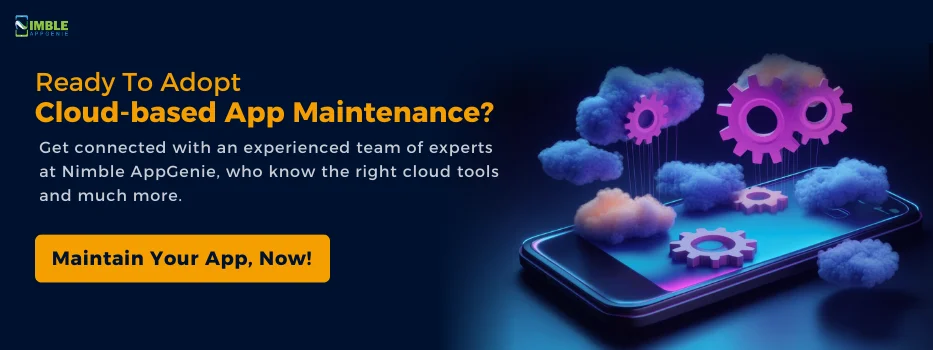
No Comments
Comments are closed.